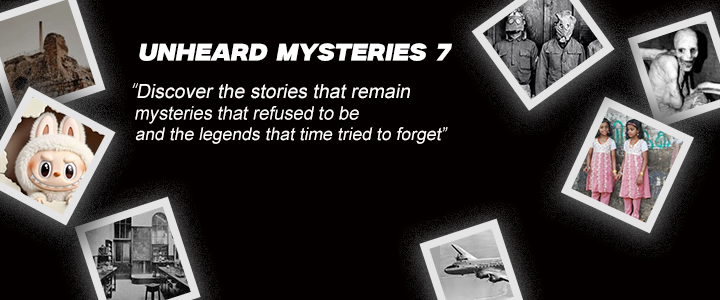Roopkund Lake – The Mysterious Skeleton Lake of India
The Mystery Of Skeleton Lake
Far away in the Indian Himalayas, there is a small lake with a strange secret. It’s called Roopkund Lake, also known as Skeleton Lake. When the snow melts, hundreds of old human bones can be seen around its edges, leaving behind one of the greatest mysteries of the mountains.
Roopkund Lake is located deep in the mountains of Uttarakhand, India, and is among the most mysterious lakes in India.
-
Roopkund altitude: About 5,029 meters (16,500 feet) above sea level.
-
It’s a small glacial lake, only about 40 meters wide, surrounded by towering Himalayan peaks and wild landscapes.
-
The Roopkund trek route takes you through forests, meadows, and rocky trails before finally reaching this remote and eerie lake.
Though the journey is long and tough, the breathtaking views of the Roopkund trek Uttarakhand make it unforgettable.
The Discovery: Bones in the Ice
In the 1940s, a forest ranger made a shocking discovery—hundreds of human skeletons scattered in and around Roopkund Lake. Some were preserved in the icy water, while others lay exposed along the edges. This raised a haunting question: Who were these people, and how did they die in such a remote, high-altitude place?
The Mystery of Roopkund Lake – What Really Happened?
The Mystery Of Skeleton Lake
Over the years, many theories have tried to explain the mystery of the Roopkund trek skeletons:
-
Deadly Hailstorm – Scientists believe a group of travelers may have been caught in a sudden hailstorm. Large hailstones struck their heads, causing deep cracks in the skulls.
-
Disease – Some suggest a deadly epidemic spread among the group, killing them before they could escape.
-
Landslides or Avalanches – Another idea is that a snow avalanche or landslide buried them, leaving their bones to resurface when the snow melted.
-
Ritual or Sacrifice – Local legends say a king and his group angered Goddess Nanda Devi, who punished them. Some also believe the lake was once used for rituals.
What Does Science Say?
Modern research has revealed fascinating facts about Skeleton Lake:
-
Who were they? DNA studies show the skeletons belong to different groups. Some were locals, while others came from faraway regions, possibly even the Mediterranean.
-
How old are the skeletons? Carbon dating suggests they are from different time periods. Some are more than 1,000 years old, while others are only about 200 years old.
-
How did they die? Many skulls have cracks consistent with blunt force trauma, likely from hailstones or falling rocks.
Artifacts such as jewelry and leather shoes indicate these were travelers, not soldiers.
The Journey to Skeleton Lake
The Roopkund trek route starts from the village of Lohajung in Uttarakhand. It usually takes several days to complete.
-
Trekkers pass through forests, alpine meadows, and high-altitude ridges.
-
The trail is challenging due to thin air, cold nights, and unpredictable weather.
-
But reaching Roopkund Lake altitude at 5,029 meters is a rewarding experience for adventure seekers.
Why is Roopkund So Fascinating?
-
The Mystery – The unanswered questions about the skeletons keep researchers and trekkers intrigued.
-
The Adventure – The Roopkund trek Uttarakhand is considered one of the most thrilling Himalayan treks.
-
The Beauty – Surrounded by snow-clad peaks, wildflowers, and panoramic Himalayan views, Roopkund is breathtaking.
-
The Science – Every discovery teaches us more about ancient travelers and their journeys.
 Visiting Skeleton Lake – What to Expect
Visiting Skeleton Lake – What to Expect
-
The Trek is Hard – Be prepared for long walks, high altitude, and cold temperatures.
-
Best Time to Visit – May to October, when the snow melts and the lake is accessible.
-
What You Will See – Besides the skeletons, you’ll witness alpine meadows, glaciers, streams, and rare Himalayan wildlife.
-
Respect the Site – Do not disturb or touch the skeletons, as they are part of history.
The Skeletons – Who Were They?
The bones belong to men, women, and even children. Jewelry, clothing remnants, and artifacts suggest they were travelers or pilgrims. The fact that people from different times and regions died here makes the mystery even more puzzling.
What Have We Learned?
-
Skeletons at Roopkund are from different centuries and cultures.
-
Roopkund was a stopping point for travelers, traders, or pilgrims.
-
Despite scientific research, the exact cause of mass deaths remains unsolved.
Quick Facts About Roopkund Skeleton Lake
-
Location – Uttarakhand, India (Himalayas)
-
Roopkund height – About 5,029 meters (16,500 feet)
-
Other Names – Roopkund, Skeleton Lake
-
First Discovery – 1940s by a forest ranger
-
Number of Skeletons – Hundreds
-
Best Time to Visit – May to October
-
Famous For – Skeletons, mysterious history, high-altitude trekking
Conclusion
Roopkund Lake, or Skeleton Lake, is a place where history, mystery, science, and adventure meet. Each time the snow melts and the bones appear, the lake reminds us of the many untold stories buried in the Himalayas. It is one of the most mysterious lakes in India, drawing trekkers, historians, and scientists alike.
Disclaimer
The story of Roopkund Lake is full of legends, historical puzzles, and scientific questions. While researchers have uncovered important facts, many details remain unknown. This blog is written to spark curiosity and share information—not to spread fear or false beliefs. Readers should treat it as an intriguing mystery of nature and history, and always rely on official studies or scientific reports for serious research.



